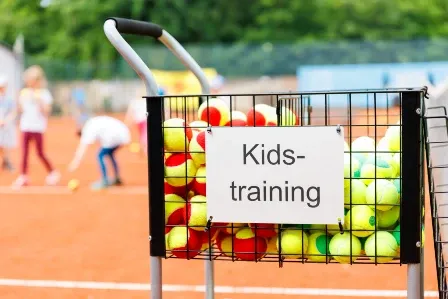
It’s that time of year when we toss aside our fears and woes and throw our hands up in celebration; World Juggling Day is here. Whether you toss hacky sacs, bowling pins, flaming torches, or your cookies, juggling has been a long-standing form of fun, fitness, and flair. Let’s talk about this quirky holiday.
History of juggling
The history of juggling is rich and dates back almost 4,000 years. In ancient Egyptian times, tombs shared depictions of juggling. Greeks and Romans also tossed their hats into the juggling arena, yet juggling began to be scorned and overlooked by many in the Middle Ages due to claims that jugglers dealt with immorality and witchcraft. (We could see how they could’ve gotten there. How do they keep these items in the air?) Today, thanks to increased available content and information, juggling has bounced back into our good graces, a talent many here at Smarty™ share.
Getting started
If you’ve ever wondered how you can get started with these clowns, our resident expert and technical support rep, Eric Devenport, is self-taught and here to give us a list of how-tos. When asked to provide tips for budding jugglers.
“Definitely juggle with a spherical object like a ball, preferably something that bounces so you don’t have to spend much time picking things up. Having similarly weighted objects when you’re just starting out is also incredibly helpful,” said Devenport. “My object of choice has always been the tennis ball. It’s how I got started in the first place.”
Eric began juggling at 15 years old while teaching young children to play tennis. He would have multiple tennis balls in his arms in his spare time. Thinking it would be a cool party trick to pull out later, Eric decided to practice juggling simply through trial and error.
“I learned to juggle within my first year using the slightly larger red practice balls the little kids use. I started with one, then worked my way up to two, then three. This doesn’t have to be an hour of dedicated practice. 5-minute increments throughout the day will help it click.”

Now, Eric can be seen juggling in the Smarty ball pit. He even juggles while riding a unicycle—a gift his parents got him thinking they were funny. (Let’s be honest; they were). When asked how to level up, he provided a myriad of responses.
“Remember how I said to find things that bounce? You can actually juggle by dribbling the balls off of the ground like a basketball and back to your hands. Juggle downward. Just make sure that you’re on a level surface so that a rock doesn’t catapult your ball into the abyss.”
He also maintains that practicing juggling without looking at the balls is the easiest way to level up your juggling skills. If you don’t have to look at them, you can focus your attention on other things, such as unicycling or stilt walking (also a sneaky talent he possesses).
When asked if he’s ever juggled anything dangerous, he replied, “I did juggle dull knives once, but I never really got good enough with those to feel confident with the sharp ones.” We’re glad you didn’t risk it, Eric. You need those digits to respond to customer requests.
Juggling communities
Thanks to Eric, you now know the ropes of getting started. Maybe you’ve already started applying to the circus, but you’ll want to look into these juggling communities to find even more support:
- International Jugglers’ Association (IJA Jugglers)
- World Juggling Federation (WJF)
- Hungarian Juggling Association
If you’re already an avid juggler and want to get more serious, here is a list of some high-level juggling events to be on the lookout for:
- IJA Festival - 2024 has already come to a close, but… there’s always next year!
- International Juggling Convention
- European Juggling Convention
Conclusion
If you’re juggling between the idea of picking up this performance art, in the words of the great Shia LaBeouf, “just do it!” You’ll have a lovely new party trick up your sleeve. Everyone will be impressed, and all your dreams will come true. Happy World Juggling Day, everyone!



